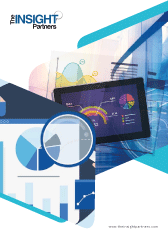$4450
$3560
The Lab Automation Market size is expected to reach US$ 8.71 billion by 2031 from US$ 5.76 billion in 2024. The market is anticipated to register a CAGR of 6.3% during 2025–2031.
Lab Automation Market Analysis
Technological advancements, regulatory & quality compliance, and demand for efficiency & throughput drive the demand for lab automation. The market growth is driven by strategic collaborations, personalized medicine & precision diagnostics, and standardization & interoperability (SiLA). AI-driven automation, cloud & remote-enabled labs, and integrated, modular, & scalable systems are expected to emerge as future trends in the market. However, the high capital and maintenance costs, integration and workflow complexity, and skills gap hamper market growth.
Lab Automation Market Overview
Laboratory automation refers to deploying advanced technologies—including robotics, software platforms, and integrated data systems—to perform laboratory operations with minimal human intervention. These operations range from routine tasks such as pipetting and sample labeling to more complex procedures like high-throughput screening, diagnostic assays, data interpretation, and report generation. The overarching goal of automation in laboratory environments is to enhance operational efficiency, accuracy, and scalability, while simultaneously reducing human error, lowering operational expenditures, and accelerating turnaround times. Automation solutions are applicable across various laboratory domains, including clinical diagnostics, pharmaceutical R&D, biotechnology, environmental analysis, and academic research. Depending on the scope of integration, laboratory automation can be classified into two categories: partial automation, which targets specific tasks, and full automation, which encompasses comprehensive end-to-end workflow automation.
Customize Research To Suit Your Requirement
We can optimize and tailor the analysis and scope which is unmet through our standard offerings. This flexibility will help you gain the exact information needed for your business planning and decision making.
Lab Automation Market: Strategic Insights

Market Size Value in US$ 5,166.31 million in 2022 Market Size Value by US$ 8,483.27 million by 2030 Growth rate CAGR of 6.4% from 2022 to 2030 Forecast Period 2022-2030 Base Year 2022

Naveen
Have a question?
Naveen will walk you through a 15-minute call to present the report’s content and answer all queries if you have any.
 Speak to Analyst
Lab Automation Market Drivers and Opportunities
Speak to Analyst
Lab Automation Market Drivers and Opportunities
Customize Research To Suit Your Requirement
We can optimize and tailor the analysis and scope which is unmet through our standard offerings. This flexibility will help you gain the exact information needed for your business planning and decision making.
Lab Automation Market: Strategic Insights

| Market Size Value in | US$ 5,166.31 million in 2022 |
| Market Size Value by | US$ 8,483.27 million by 2030 |
| Growth rate | CAGR of 6.4% from 2022 to 2030 |
| Forecast Period | 2022-2030 |
| Base Year | 2022 |

Naveen
Have a question?
Naveen will walk you through a 15-minute call to present the report’s content and answer all queries if you have any.
 Speak to Analyst
Speak to Analyst
Market Drivers:
Technological Advancement:
Laboratory automation has been undergoing rapid growth due to technological innovations. One of the latest innovations types of evidence how integrated and intelligent systems are revolutionizing traditional workflows. The significant improvement in this field is the introducing of the Sapio Scientific Data Cloud by Sapio Sciences on October 2, 2023. This state-of-the-art platform allows researchers and organizations to extend the use of their research, development, and clinical datasets to the maximum--in fact, these are the new scientific assets that are being acknowledged. In line with the strategy of Sapio, this debut turns out to be a game-changer by presenting a single, no-code interface that allows for the smooth integration of Laboratory Information Management Systems (LIMS), Electronic Lab Notebooks (ELN), and Scientific Data Management Systems (SDMS). This complete "lab triple-play" not only imparts the features of versatility, scalability, and higher operational efficiency to the labs as the driving factors of the performance but also is basically the key to success objects from the perspective of the scientific automated environments which are progressively being established internationally.
Regulatory & Quality Compliance:
One of the main factors that drives growth in the laboratory automation market is the increasing need for systems that simplify regulatory and quality compliance, especially in such domains as biotechnology, pharmaceuticals, diagnostics, and clinical research, which are highly regulated. These sectors are subject to strict regulations such as Good Laboratory Practice (GLP), Good Manufacturing Practice (GMP), FDA 21 CFR Part 11, and different ISO standards, which require absolute data integrity, traceability, and reproducibility standards. Traditional manual or partly automated workflows are often unable to comply with such standards, leading to the inefficient operation of the organization, the high risk of audits, and even possible penalties. On the other hand, automated laboratory systems are a revolutionary solution as they incorporate compliance protocols at the very core of laboratory workflows, thus increasing trust, lowering risk, and easing regulatory compliance.
Market Opportunities:
StrategicCollaborations:
The laboratory automation industry is opening significant growth opportunities, the main reason being that different companies are coming together to provide integrated solutions to the customers. A most illustrative example is the cooperation signed on January 24, 2025, between ABB Robotics and Agilent Technologies, a global leader in analytical instrumentation and laboratory informatics. The core of this work-sharing project is the common harnessing of the next-generation automated laboratory systems, which combine ABB’s state-of-the-art robotic technology with Agilent’s extremely precise analytical instruments. Their common know-how and skills put the partnership in a position to renew laboratory activities in many sectors, for example, pharmaceuticals, biotechnology, energy, and so on. The integrated solutions have been widely used for speeding up, simplifying standardization, and diagnostic functions in the laboratories, with the quality of research, diagnostic testing, and other areas required by the laboratory functions, to name a few.
Lab Automation Market Report Segmentation Analysis
The lab automation market is categorized into distinct segments to comprehensively understand its structure, growth prospects, and emerging trends. Below is the standard segmentation approach used in industry reports:
By Type:
Equipment:
The equipment segment represents the basic hardware and machines that have enabled the automation of laboratory tasks that have been traditionally done manually. Some of the sophisticated devices that come under this category are robotic arms, automation liquid handling systems, analyzers, centrifuges, plate handlers, incubators, and sample storage units. These machines are designed to carry out operations such as pipetting, sample preparation, mixing, and transport within the laboratory with greatly increased speed, accuracy, and uniformity as compared to the manual methods. This category accounted for the highest share of the lab automation market in 2024.Software:
Software is the brain that controls, powers, and coordinates automated processes. This segment includes solutions such as ELN, LIMS, SDMS, instrument control software, and more.
By Equipment:
Automated Workstations:
The automated workstations carry out various laboratory processes - such as sample preparation, nucleic acid extraction, PCR setup, and assay execution - in a combined system. This segment captured the largest market share of lab automation in 2024.
Liquid Handling Systems:
Liquid handling systems are the means to the accurate and repeatable transfer of liquids - a process that is almost always carried out in laboratory workflows, e.g., genomics, proteomics, drug screening, and cell culture.Robotic Systems:
Robotic systems in laboratory automation automating the physical movement of the samples, labware, and reagents, which are intermixed with various instruments and workstations.Microplate Readers:
Microplate readers are the devices that perform the analysis of biological, chemical, or physical reactions in microtiter plates, which are the plates that are used in drug discovery, diagnostics, and molecular biology.Automated Storage and Retrieval Systems (ASRS):
Storage and Retrieval Systems (ASRS): The ASRS is the answer to one of the major logistics problems of contemporary laboratories: the storage of samples and reagents in large quantities in a safe, organized, and traceable way.Others:
The "others" category comprises specialized and emerging technologies that are designed to solve niche applications or to simplify the existing workflows. It also includes colony pickers, automated microscopy, real-time PCR platforms, sample barcoding systems, and AI-powered imaging platforms.
By Application:
- Clinical Diagnostics
- Drug Discovery
- Proteomics Solutions
- Genomics Solutions
- Others
By End User:
- Hospitals and Diagnostic Centers
- Pharmaceutical Companies
- Contract Research Organizations (CROs)
- Educational and Research Institutions
By Geography:
- North America
- Europe
- Asia Pacific
- South & Central America
- Middle East & Africa
The lab automation market in the Asia Pacific is witnessing the fastest growth, driven by demographic shifts, rising healthcare demand, growing biotechnology sectors, and government-led digitization initiatives.
Lab Automation Market Report ScopeLab Automation Market Share Analysis by Geography
North America still positions itself at the top of the global automated laboratory market. At the same time, the US and Canada take the lead in the adoption of the technology in clinical diagnostics, life sciences research, and pharmaceutical applications. The area mentioned above is benefiting from a stable healthcare infrastructure, a proactive regulatory framework, and a significant expenditure on research and development—these being the factors that, individually, position North America as a center of innovation and deployment of automated laboratory technologies. The need for the rapid processing of the samples, the accuracy of the analytical determinations, and keeping the costs under control are the main drivers behind an accelerated implementation of the total solutions for automatic handling of samples in the North American laboratories.
Europe is described as a market with a very rigorous and quality-oriented approach to laboratory automation. The region requires the establishment of standardized healthcare methods and practices to ensure the traceability of all data recorded and compliance with regulations. The mentioned key markets, which include Germany, the UK, France, Italy, and the Nordic countries, are the major players in the European advanced automation ecosystem. With predominantly publicly financed healthcare systems, European laboratories are turning to technology, particularly computerization, to realize the promise of testing efficiency, error minimization, and the smooth flow of operational activities in both clinical and research domains.
The lab automation market growth differs in each region due to technological advancement, regulatory & quality compliance, and demand for efficiency & throughput. Below is a summary of market share and trends by region:
1. North America
Market Share:
Holds a large portion of the global market shareKey Drivers:
- High demand for advanced diagnostics and personalized medicine.
- Strong investment in R&D by pharmaceutical and biotech firms.
- Labor shortages in clinical and research labs are pushing automation adoption.
- Stringent regulatory compliance is driving standardization and digitalization.
Trends:
Integrated Automation in Clinical Laboratories.
2. Europe
Market Share:
Substantial share owing to early, stringent EU regulationsKey Drivers:
- Substantial public funding for academic and life sciences research.
- Emphasis on data integrity and compliance with regulations such as GDPR.
- Growing need for cost-effective research infrastructure.
- Rising focus on pharmaceutical innovation and biotech startups.
Trends:
AI-Powered Automation in Research Labs.
3. Asia Pacific
Market Share:
Fastest-growing regionKey Drivers:
- Rising healthcare expenditure in China, India, and Southeast Asia.
- Expanding pharmaceutical manufacturing and clinical trial activities.
- Government-backed initiatives for healthcare modernization and smart labs.
- Increasing demand for rapid diagnostics in large population centers.
Trends:
Mass Automation in Clinical Diagnostics.
4. Middle East and Africa
Market Share:
Although small, it is growing quicklyKey Drivers:
- Government funding for public health, genomics, and disease surveillance.
- Emerging medical hubs in the UAE and Saudi Arabia.
- Need for improved lab turnaround times and efficiency.
- Rising interest in precision medicine and national health strategies.
Trends:
Automation in National Genomics and Public Health Labs.
5. South & Central America
Market Share:
Growing Market with steady progressKey Drivers:
- Growing private investment in clinical and pathology labs.
- Rising awareness of laboratory quality standards.
- Need to reduce operational inefficiencies and manual errors.
- Gradual improvement in healthcare infrastructure.
Trends:
Adoption of Modular Automation in the Private Sector.
Lab Automation Market Players Density: Understanding Its Impact on Business Dynamics
High Market Density and Competition
Competition is intense due to the presence of major global players such as Thermo Fisher Scientific Inc., Siemens AG, Danaher Corp, Honeywell International Inc, Revvity Inc, and Analytik Jena GmbH+Co. KG, Abbott Laboratories, and bioMérieux SA. Regional and specialized providers such as Eppendorf (Germany), Horiba (Japan), Agilent Technologies (US), and Bioneer (South Korea) bring innovation and domain-specific focus, further intensifying the competitive landscape.
This high level of competition urges companies to stand out by offering:
- End-to-end lab automation solutions (e.g., sample prep, analysis, data integration)
- Investments in robotics, AI, and smart lab technologies
- Customization for niche sectors such as genomics, clinical diagnostics, drug discovery, and food testing
- Cloud-based software platforms with real-time data capture, compliance tracking, and analytics.
Opportunities and Strategic Moves
- Adoption of AI, IoT, and Smart Automation.
- Cloud & Data Integration Platforms.
- Personalized Medicine & Genomics Boom
- Strategic Partnerships and M&A
Major Companies operating in the Lab Automation Market are:
- Thermo Fisher Scientific Inc. (US)
- Siemens AG (Germany)
- Danaher Corp (Germany)
- Honeywell International Inc (US)
- Agilent Technologies Inc (US)
- Revvity Inc (US)
- Analytik Jena GmbH+Co. KG (Germany)
- Abbott Laboratories (US)
- Eppendorf SE (Germany)
- bioMerieux SA (France)
Disclaimer: The companies listed above are not ranked in any particular order.
Other companies analyzed during the course of research:
- PerkinElmer, Inc.
- Tecan Group Ltd.
- Hamilton Company
- Becton Dickinson (BD)
- Bio-Rad Laboratories
- Roche Diagnostics
- Sartorius AG
- Mettler-Toledo
- Labcyte (Echo)
- Synchron Lab Automation
- Aurora Biomed
- Opentrons
- Gilson, Inc.
- LabVantage Solutions
- LabWare
- BMG LABTECH
- Andrew Alliance (Waters)
- Hudson Robotics
- Peak Analysis & Automation
- Systech Illinois
- Integra Biosciences
- SPT Labtech
- QIAGEN
- Formulatrix
- Integra Biosciences
Lab Automation Market News and Recent Developments
Danaher Corporation announced the launch of two new Clinical Laboratory Improvement Amendments (CLIA) and College of American Pathologists (CAP)-certified labs, July 2024 -
Danaher Corporation, a global science and technology innovator, announced the launch of two new Clinical Laboratory Improvement Amendments (CLIA) and College of American Pathologists (CAP)-certified labs to accelerate the development of Companion Diagnostics (CDx) and Complementary Diagnostics (CoDx).Revvity, Inc. announced the launch of the Auto-Pure 2400 liquid handler, April 2025 -
Revvity, Inc. announced the launch of the Auto-Pure 2400 liquid handler from Allsheng for use with the T-SPOT TB test. The Auto-Pure 2400 platform is easy to use and designed to provide efficient lab workflows. When the accuracy of the T-SPOT TB test is combined with the efficiency of the Auto-Pure 2400 system, labs, clinicians, and ultimately patients benefit from the resultant powerful solution.
Lab Automation Market Report Coverage and Deliverables
The "Lab Automation Market Size and Forecast (2021–2031)" report provides a detailed analysis of the market covering below areas:
- Lab automation market size and forecast at global, regional, and country levels for all the key market segments covered under the scope
- Lab automation market trends, as well as market dynamics such as drivers, restraints, and key opportunities
- Detailed PEST and SWOT analysis
- Lab automation market analysis covering key market trends, global and regional framework, major players, regulations, and recent market developments
- Industry landscape and competition analysis covering market concentration, heat map analysis, prominent players, and recent developments for the lab automation market
- Detailed company profiles

Report Coverage
Revenue forecast, Company Analysis, Industry landscape, Growth factors, and Trends

Segment Covered
Product, Application, End User, and Geography

Regional Scope
North America, Europe, Asia Pacific, Middle East & Africa, South & Central America

Country Scope
This text is related
to country scope.
Frequently Asked Questions
As of 2024, the global lab automation market is valued at approximately USD 5.76 billion. It is projected to reach USD 8.71 billion by 2031, growing at a compound annual growth rate (CAGR) of 6.3% during the forecast period from 2025 to 2031.
Major players include Thermo Fisher Scientific Inc., Siemens AG, Danaher Corp, Honeywell International Inc, Agilent Technologies Inc, Revvity Inc, Analytik Jena GmbH+Co. KG, Abbott Laboratories, Eppendorf SE, and bioMérieux SA.
While North America and Europe currently dominate, Asia Pacific, the Middle East & Africa, and parts of South & Central America are expected to witness rapid growth due to the strategic collaborations, personalized medicine & precision diagnostics, and standardization & interoperability (SiLA).
Top trends include:1. AI-Driven Automation2. Integrated, Modular, & Scalable Systems3. Cloud & Remote-Enabled Labs
Challenges includeHigh Capital and Maintenance Costs: Despite the clear benefits of lab automation in enhancing efficiency, accuracy, and compliance, one of the most significant restraints hindering market adoption, particularly among small and mid-sized laboratories, is the high upfront investment and ongoing maintenance costs associated with advanced automation systems.
AI and ML are revolutionizing lab automation by:1. Automated Experiment Planning: AI-driven experiments (DoE) design can intelligently plan and prioritize experiments based on outcomes, reducing trial-and-error.2. Predictive Maintenance & Fault Detection: ML algorithms monitor instrument usage patterns and environmental variables to predict maintenance needs or detect failures before they occur.
Hospitals and diagnostic centers are important consumers of lab automation technologies, especially in clinical diagnostics. The number of samples these organizations process daily is huge. It is, in most cases, under considerable time pressure, so that efficiency, accuracy, and standardization become its next critical operational priorities. In a hospital environment, automation makes it possible to carry out both routine and specialized diagnostic tests--blood chemistry, hematology, immunoassays, and molecular diagnostics--by means of systems that mechanize the various stages of the work, such as sample sorting, barcoding, aliquoting, testing, and results reporting.
The market is primarily driven by:1. Technological Advancement: The delivery of Sapio Scientific Data Cloud not only exemplifies but also proudly marks MilliporeSigma’s partnership with Opentrons Labworks, Inc., which is a multi-year, continuous engagement that aims to revamp laboratory workflows through the deployment of smart, budget-friendly automation solutions. Such enhancements signal a broader sentiment in the industry that is the adoption of various technologies, including AI-driven analytics and modular automation platforms, as a means of getting closer to the end goal of highly efficient and data-centric ecosystems in laboratories. Moreover, as companies move to shorten their R&D cycles and, at the same time, guarantee data integrity, the use of technological innovation as a main driver for lab automation will still be on the rise.2. Demand for Efficiency & Throughput: In addition, the rapidly growing lab automation market is another significant factor that keeps the demand going for operational efficiency and high-throughput capabilities; not only that, but also this demand is coming from the life sciences sector. The situation in which research timelines, especially during drug discovery and development stages, are required to be shortened at a fast pace has become more and more demanding in pharmaceutical and biotechnology laboratories. The manual processes used in labs are not only time-consuming but also prone to errors, which can be very costly in the end product. These processes are usually the same repetitive tasks as pipetting, sample preparation, and data entry are done in these manual methods.
The List of Companies - Lab Automation Market
- Thermo Fisher Scientific Inc.
- Siemens AG
- Danaher Corp
- Honeywell International Inc
- Agilent Technologies Inc
- Revvity Inc
- Analytik Jena GmbH+Co. KG
- Abbott Laboratories
- Eppendorf SE
- bioMerieux SA
The Insight Partners performs research in 4 major stages: Data Collection & Secondary Research, Primary Research, Data Analysis and Data Triangulation & Final Review.
- Data Collection and Secondary Research:
As a market research and consulting firm operating from a decade, we have published many reports and advised several clients across the globe. First step for any study will start with an assessment of currently available data and insights from existing reports. Further, historical and current market information is collected from Investor Presentations, Annual Reports, SEC Filings, etc., and other information related to company’s performance and market positioning are gathered from Paid Databases (Factiva, Hoovers, and Reuters) and various other publications available in public domain.
Several associations trade associates, technical forums, institutes, societies and organizations are accessed to gain technical as well as market related insights through their publications such as research papers, blogs and press releases related to the studies are referred to get cues about the market. Further, white papers, journals, magazines, and other news articles published in the last 3 years are scrutinized and analyzed to understand the current market trends.
- Primary Research:
The primarily interview analysis comprise of data obtained from industry participants interview and answers to survey questions gathered by in-house primary team.
For primary research, interviews are conducted with industry experts/CEOs/Marketing Managers/Sales Managers/VPs/Subject Matter Experts from both demand and supply side to get a 360-degree view of the market. The primary team conducts several interviews based on the complexity of the markets to understand the various market trends and dynamics which makes research more credible and precise.
A typical research interview fulfils the following functions:
- Provides first-hand information on the market size, market trends, growth trends, competitive landscape, and outlook
- Validates and strengthens in-house secondary research findings
- Develops the analysis team’s expertise and market understanding
Primary research involves email interactions and telephone interviews for each market, category, segment, and sub-segment across geographies. The participants who typically take part in such a process include, but are not limited to:
- Industry participants: VPs, business development managers, market intelligence managers and national sales managers
- Outside experts: Valuation experts, research analysts and key opinion leaders specializing in the electronics and semiconductor industry.
Below is the breakup of our primary respondents by company, designation, and region:

Once we receive the confirmation from primary research sources or primary respondents, we finalize the base year market estimation and forecast the data as per the macroeconomic and microeconomic factors assessed during data collection.
- Data Analysis:
Once data is validated through both secondary as well as primary respondents, we finalize the market estimations by hypothesis formulation and factor analysis at regional and country level.
- 3.1 Macro-Economic Factor Analysis:
We analyse macroeconomic indicators such the gross domestic product (GDP), increase in the demand for goods and services across industries, technological advancement, regional economic growth, governmental policies, the influence of COVID-19, PEST analysis, and other aspects. This analysis aids in setting benchmarks for various nations/regions and approximating market splits. Additionally, the general trend of the aforementioned components aid in determining the market's development possibilities.
- 3.2 Country Level Data:
Various factors that are especially aligned to the country are taken into account to determine the market size for a certain area and country, including the presence of vendors, such as headquarters and offices, the country's GDP, demand patterns, and industry growth. To comprehend the market dynamics for the nation, a number of growth variables, inhibitors, application areas, and current market trends are researched. The aforementioned elements aid in determining the country's overall market's growth potential.
- 3.3 Company Profile:
The “Table of Contents” is formulated by listing and analyzing more than 25 - 30 companies operating in the market ecosystem across geographies. However, we profile only 10 companies as a standard practice in our syndicate reports. These 10 companies comprise leading, emerging, and regional players. Nonetheless, our analysis is not restricted to the 10 listed companies, we also analyze other companies present in the market to develop a holistic view and understand the prevailing trends. The “Company Profiles” section in the report covers key facts, business description, products & services, financial information, SWOT analysis, and key developments. The financial information presented is extracted from the annual reports and official documents of the publicly listed companies. Upon collecting the information for the sections of respective companies, we verify them via various primary sources and then compile the data in respective company profiles. The company level information helps us in deriving the base number as well as in forecasting the market size.
- 3.4 Developing Base Number:
Aggregation of sales statistics (2020-2022) and macro-economic factor, and other secondary and primary research insights are utilized to arrive at base number and related market shares for 2022. The data gaps are identified in this step and relevant market data is analyzed, collected from paid primary interviews or databases. On finalizing the base year market size, forecasts are developed on the basis of macro-economic, industry and market growth factors and company level analysis.
- Data Triangulation and Final Review:
The market findings and base year market size calculations are validated from supply as well as demand side. Demand side validations are based on macro-economic factor analysis and benchmarks for respective regions and countries. In case of supply side validations, revenues of major companies are estimated (in case not available) based on industry benchmark, approximate number of employees, product portfolio, and primary interviews revenues are gathered. Further revenue from target product/service segment is assessed to avoid overshooting of market statistics. In case of heavy deviations between supply and demand side values, all thes steps are repeated to achieve synchronization.
We follow an iterative model, wherein we share our research findings with Subject Matter Experts (SME’s) and Key Opinion Leaders (KOLs) until consensus view of the market is not formulated – this model negates any drastic deviation in the opinions of experts. Only validated and universally acceptable research findings are quoted in our reports.
We have important check points that we use to validate our research findings – which we call – data triangulation, where we validate the information, we generate from secondary sources with primary interviews and then we re-validate with our internal data bases and Subject matter experts. This comprehensive model enables us to deliver high quality, reliable data in shortest possible time.
Trends and growth analysis reports related to Lab Automation Market

Sep 2025
Flight Planning Software Market
Size and Forecast (2021 - 2031), Global and Regional Share, Trend, and Growth Opportunity Analysis Report Coverage: By Component (Software and Services), Deployment (Cloud and On-Premise), Application (Logistics and Cargo, Airport, Private Airlines, Commercial Airlines, Flight School and Training Center, and Military and Defense), and Geography

Sep 2025
Deepfake AI Detection Market
Size and Forecast (2021 - 2031), Global and Regional Share, Trend, and Growth Opportunity Analysis Report Coverage: By Component (Software and Services), Deployment (Cloud and On-Premises), Enterprise Size (Large Enterprises and SMEs), Industry Vertical (Media and Entertainment, BFSI, Government and Politics, Healthcare and Life Sciences, IT and Telecom, Retail and E-Commerce, and Others), and Geography

Sep 2025
Electronic Patient-Reported Outcomes (ePROS) Market
Size and Forecast (2021 - 2031), Global and Regional Share, Trend, and Growth Opportunity Analysis Report Coverage: By Delivery Mode (Cloud Based and On-Premises), Application (Oncology, Respiratory, and Others), End User [Contract Research Organizations (CROs), Pharmaceutical Companies, and Others], and Geography (North America, Europe, Asia Pacific, Middle East & Africa, and South & Central America)

Sep 2025
Travel and Expense Management Software Market
Size and Forecast (2021 - 2031), Global and Regional Share, Trend, and Growth Opportunity Analysis Report Coverage: By Deployment Mode (On-Premise and Cloud), Organization Size (Large Enterprises and Small and Medium Enterprises), Industry (BFSI, IT and Telecom, Manufacturing, Healthcare, Government and Defense, Retail, Transport and Logistics, and Others), and Geography

Sep 2025
Online Exam Proctoring Market
Size and Forecast (2021 - 2031), Global and Regional Share, Trend, and Growth Opportunity Analysis Report Coverage: By Type (Advanced Automated Proctoring, Recorded Proctoring, and Live Online Proctoring), Deployment (Cloud and On-Premises), End User (Educational Institutes, Enterprises, Government, and Online Learning Platforms), and Geography

Sep 2025
Data Center Colocation Market
Size and Forecast (2021 - 2031), Global and Regional Share, Trend, and Growth Opportunity Analysis Report Coverage: By Type (Retail Colocation, Wholesale Colocation, and Hybrid Cloud-based Colocation), Enterprise Size (Large Enterprises and SMEs), Industry Vertical (IT and Telecom, BFSI, Healthcare, Retail, and Others), and Region (North America, Europe, Asia Pacific, Middle East and Africa, and South and Central America)

Sep 2025
Personality Assessment Solution Market
Size and Forecast (2021 - 2031), Global and Regional Share, Trend, and Growth Opportunity Analysis Report Coverage: By Component (Solution and Services), Delivery Model (In-House and Outsourced), Offering (Synchronous and Asynchronous), End-user (Corporate or Enterprise [BFSI, Hospitality, IT and Telecom, Media and Entertainment, Healthcare and Pharmaceutical, and Others]), Academic or Education and Government), and Geography